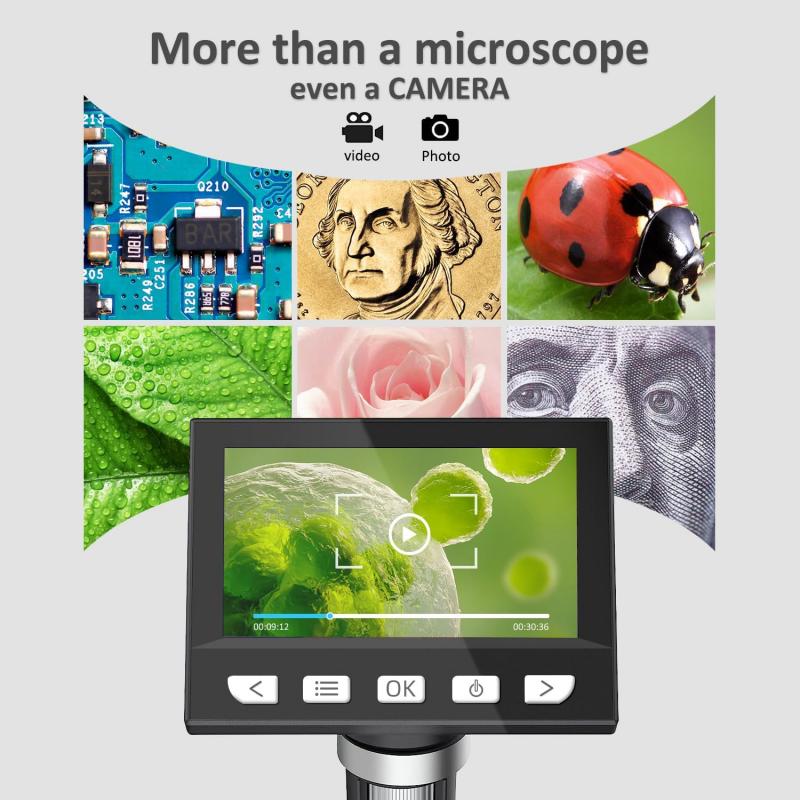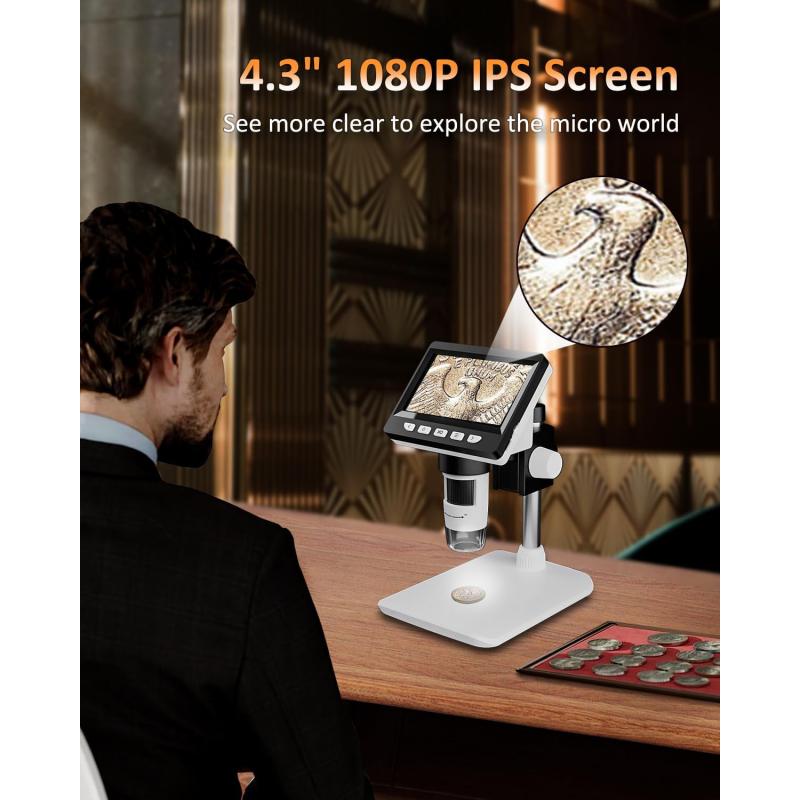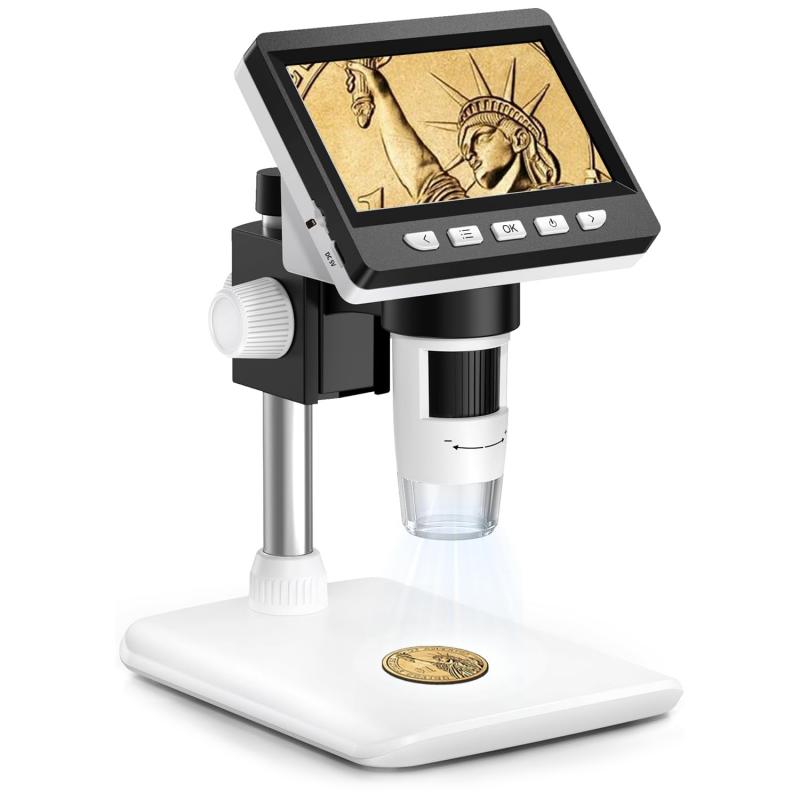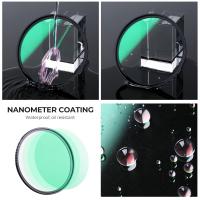How To Identify Cells Under A Microscope ?
To identify cells under a microscope, first prepare a microscope slide by placing a thin, transparent specimen on it. Adjust the focus and lighting of the microscope to obtain a clear view. Start with a low magnification objective lens and gradually increase the magnification to observe the cells in more detail. Look for characteristics such as cell shape, size, and arrangement. Additionally, staining techniques can be used to enhance cell visibility and highlight specific structures or components within the cells. By comparing the observed characteristics with known cell types, it is possible to identify the cells under the microscope.
1、 Cell morphology and structure
To identify cells under a microscope, one must carefully observe their morphology and structure. Here are the steps to follow:
1. Prepare the sample: Start by preparing a thin, transparent sample of the cells you want to observe. This can be done through techniques like staining, fixing, or culturing cells on a slide.
2. Adjust the microscope: Set the microscope to the appropriate magnification and focus. Begin with the lowest magnification and gradually increase it until the cells are clearly visible.
3. Observe cell shape and size: Pay attention to the overall shape and size of the cells. Cells can be round, oval, elongated, or irregular in shape. Note any variations in size, as abnormal cell sizes can indicate certain diseases or conditions.
4. Examine the cell membrane: Look for the presence of a cell membrane, which appears as a thin, transparent boundary surrounding the cell. The cell membrane controls the movement of substances in and out of the cell.
5. Identify the nucleus: Locate the nucleus, which is usually the largest structure within the cell. It appears as a dark, round or oval-shaped region. The nucleus contains the cell's genetic material and is crucial for cell function and replication.
6. Look for other organelles: Identify other organelles within the cell, such as mitochondria, endoplasmic reticulum, Golgi apparatus, and lysosomes. These structures perform specific functions within the cell and can provide clues about the cell's type and activity.
7. Note any abnormalities: Finally, observe for any abnormalities or irregularities in cell morphology. These can include changes in cell shape, size, or the presence of abnormal structures. Such observations can be indicative of diseases like cancer or infections.
It is important to note that the latest advancements in microscopy techniques, such as confocal microscopy and super-resolution microscopy, allow for more detailed and precise identification of cells. These techniques provide enhanced resolution and can reveal finer cellular structures and interactions.

2、 Cell size and shape
To identify cells under a microscope, several factors need to be considered, with cell size and shape being the primary characteristics. Cell size can vary significantly, ranging from a few micrometers to several millimeters, depending on the type of cell. For instance, red blood cells are typically around 7-8 micrometers in diameter, while nerve cells can be as long as several centimeters.
To determine cell size, a calibrated eyepiece or stage micrometer can be used to measure the dimensions of the cells. This involves placing the microscope slide with the cells under the microscope and using the calibrated scale to measure the length and width of the cells. Additionally, the use of a graticule, a glass slide with a grid pattern, can aid in estimating cell size.
Cell shape is another crucial characteristic for identification. Cells can have various shapes, such as round, oval, elongated, or irregular. The shape of a cell can provide valuable information about its function and type. For example, red blood cells are biconcave discs, while nerve cells have long, branching extensions called dendrites and axons.
It is important to note that cell size and shape alone may not be sufficient for accurate identification. Other factors, such as the presence of specific organelles, cell arrangement, and staining techniques, may also be necessary to differentiate between different cell types. Moreover, advancements in microscopy techniques, such as confocal microscopy and electron microscopy, have allowed for more detailed analysis of cell structure and identification.
In conclusion, identifying cells under a microscope involves assessing their size and shape. However, it is essential to consider other factors and employ advanced microscopy techniques for a comprehensive understanding of cell identification.

3、 Cell organelles and their arrangement
To identify cells under a microscope, it is important to understand the various cell organelles and their arrangement within the cell. Cell organelles are specialized structures that perform specific functions within the cell. By observing these organelles, we can determine the type of cell and its characteristics.
Firstly, the nucleus is the most prominent organelle and is usually located in the center of the cell. It contains the genetic material and is responsible for controlling cell activities. The nucleus appears as a dark, round structure under the microscope.
Next, the cytoplasm is the gel-like substance that fills the cell. It contains various organelles such as mitochondria, endoplasmic reticulum, Golgi apparatus, and lysosomes. These organelles can be identified by their distinct shapes and sizes. For example, mitochondria appear as elongated structures with a double membrane, while the endoplasmic reticulum appears as a network of interconnected tubes.
Additionally, the Golgi apparatus is responsible for packaging and transporting proteins within the cell. It appears as a stack of flattened sacs. Lysosomes, on the other hand, are small spherical structures that contain digestive enzymes.
Furthermore, observing the cell membrane can provide information about the cell's structure and function. The cell membrane is a thin, flexible barrier that surrounds the cell. It can be identified as a thin line surrounding the cell.
Lastly, recent advancements in microscopy techniques, such as fluorescence microscopy and electron microscopy, have allowed for more detailed observations of cell organelles. Fluorescence microscopy uses fluorescent dyes to label specific organelles, making them easier to identify. Electron microscopy provides higher resolution images, allowing for the visualization of smaller organelles and their intricate structures.
In conclusion, identifying cells under a microscope involves observing the arrangement and characteristics of various cell organelles. Understanding the functions and structures of these organelles is crucial in determining the type and properties of the cell. Advancements in microscopy techniques have further enhanced our ability to study and identify cells at a more detailed level.

4、 Cell staining and coloration
One of the most common and effective methods to identify cells under a microscope is through cell staining and coloration. This technique involves the use of dyes or stains that selectively bind to specific cellular components, allowing them to be visualized and distinguished from the surrounding structures.
There are various types of stains available, each targeting different cellular components. For example, hematoxylin and eosin (H&E) staining is commonly used to visualize the nucleus and cytoplasm of cells. Hematoxylin stains the nucleus blue-purple, while eosin stains the cytoplasm pink. This staining technique provides a general overview of cell morphology and is widely used in histology.
Immunohistochemistry (IHC) is another staining technique that utilizes antibodies to specifically target and visualize proteins of interest. By using antibodies that are labeled with fluorescent or enzyme tags, specific proteins can be identified within cells. This technique is particularly useful in studying protein expression patterns and localization within tissues.
In recent years, advancements in staining techniques have allowed for more specific and detailed visualization of cellular components. Fluorescent dyes, such as DAPI, can selectively bind to DNA and emit fluorescence when excited by specific wavelengths of light. This enables the visualization of the nucleus and chromosomal structures with high specificity and sensitivity.
Additionally, newer staining methods, such as live-cell staining, have been developed to study dynamic cellular processes in real-time. These stains are designed to be non-toxic and compatible with living cells, allowing researchers to observe cellular events, such as cell division or protein trafficking, without disrupting normal cellular function.
In conclusion, cell staining and coloration techniques are essential tools for identifying cells under a microscope. They provide valuable information about cell morphology, protein expression, and dynamic cellular processes. With the continuous advancements in staining methods, researchers can gain deeper insights into the intricate world of cells and their functions.





























There are no comments for this blog.